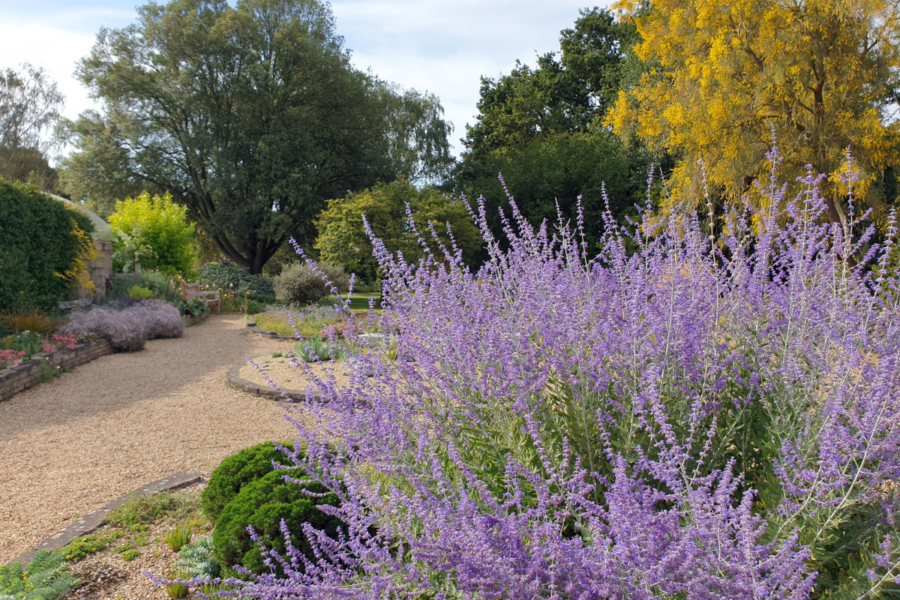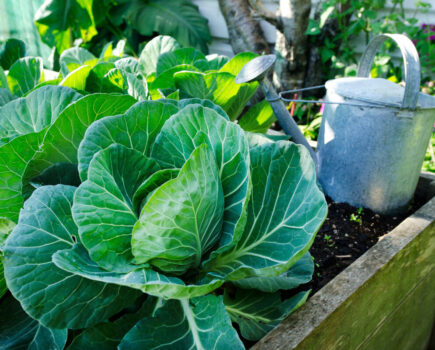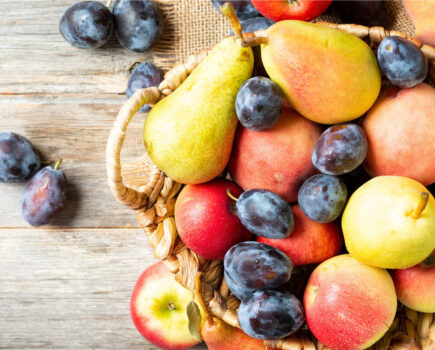These varied plants bring so much to the garden
After all the rain we’ve received so far this year, the garden is looking fresh, full and fabulous. The kaleidoscope of colour has arrived, as if Mother Nature has spilled her entire paint palette on the garden. With all this variety, the struggle isn’t finding options, it’s choosing just one to write about! Julia x
Salvias are a wide-ranging genus including classic border perennials in the form of S. nemorosa and S. x sylvestris cultivars; nemorosa and sylvestris meaning ‘of woods’, referring to the natural habitat of these salvias, typically found growing in groves and woods across central Europe and Western Asia.
Others vary in their needs, from the tall moisture loving bog sage S. uliginosa, to the drought resistant and short-lived, silver-woolly S. argentea. The genus also includes S. rosmarinus (rosemary), S. officinalis (common sage) and its variants. Salvias are native to all continents, (excluding the Arctic & Antarctic), with more than 1,000 species and nearly 300 in Mexico alone. Most will require full sun, with some of the shrubbier species enjoying a sheltered garden position.
For the herbaceous salvias, once flowers have faded in midsummer, the spikes can be removed to encourage a second flush of smaller flowers. In late winter/early spring, last year’s spent plant material can be cut down to the ground ready for the new growth to emerge from the crown.
Irrespective of growth, form, stature or location, any salvia in flower will be a busy, buzzy melée of insect activity. Bilaterally symmetrical flowers restrict the range of pollinators to primarily bees, especially bumblebees, the size of which reflects the size of the flowers in each species.
Species of micromoths use forms of salvia as their larval food plant. In the autumn, the seed-heads are attractive in their own right and contain seeds that are food for finches such as goldfinches, while the seed-heads also provide shelter for beneficial predators such as ladybirds, as well as smaller insects and spiders that may be gleaned by wrens.
Popular salvias
Salvia ‘Blue Spire’ (syn. perovskia)

Makes a vertical feature as soon as the slender, whitened stems, lightly clad in fine-cut grey leaves, appear in the dry sunny garden. By mid-summer they are topped with long spires of lavender-blue flowers.
Salvia ‘Hot Lips’
Produces small, aromatic green leaves and flowers in midsummer to autumn, bicolored red and white, sometimes completely white when the days shorten. Very floriferous in all its colour stages, continuing to the first frost.

Salvia sclarea var. turkestanica (biennial clary sage)
An erect perennial or biennial with hairy wrinkled, mid-green leaves. Spikes of large white flowers with pink bracts from spring to summer. will seed freely and some seedlings may flower in the first year.

Salvia patens ‘Cambridge Blue’ (gentian sage)
Gaping mouthed tubular flowers 5 cm long, in pale sky-blue, open in pairs over many weeks on slender spires. Best in an open sunny site. An extra mulch will help protect the rootstock over winter.

Salvia x sylvestris ‘Mainacht’ (wood sage)
A German hybrid between S. pratensis and S. nemorosa, makes bushy plants crowded with dense heads of deep purple flowers, enhanced by dark stems and reddish bracts, very effective singly, or in groups for landscape effect.

Find more tips, advice and articles like this at the Amateur Gardening website. Subscribe to Amateur Gardening magazine now





